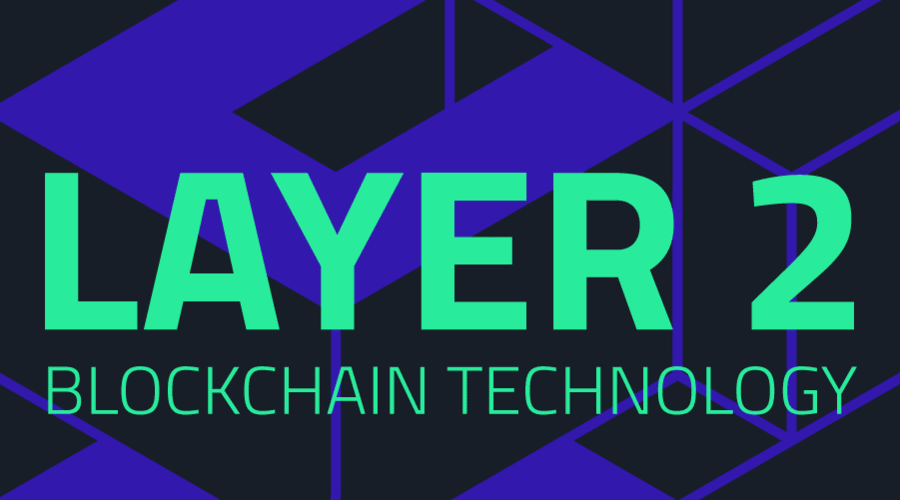Layer 2 scaling solutions have emerged as a vital component in addressing scalability challenges in blockchain networks. These solutions allow for off-chain processing and provide an effective way to increase the throughput of transactions. However, achieving scalability is not the sole consideration for successful blockchain implementation. Governance models play a crucial role in ensuring the sustainability and long-term success of layer 2 networks. This article explores the concepts of decentralization and decision-making within layer 2 governance models, highlighting their importance and implications.
Understanding Layer 2 Scaling Solutions
Before delving into governance, it is important to grasp the concept of layer 2 scaling solutions. Layer 2 solutions aim to alleviate the scalability limitations of layer 1 blockchains, such as Ethereum, by enabling most transactions to be conducted off-chain. Examples of layer 2 solutions include state channels, sidechains, and rollups. By moving transactions off the main chain, these solutions reduce congestion, lower fees, and increase transaction throughput.
The Importance of Governance in Layer 2 Networks
Governance refers to the processes and structures that facilitate decision-making and coordination within a network. In the context of layer 2 networks, effective governance is crucial for achieving consensus, ensuring security, and fostering innovation. It allows participants to collectively decide on important matters, such as protocol upgrades, fee structures, and dispute resolution mechanisms. Furthermore, governance models influence the level of decentralization and user empowerment within a network.
Defining Decentralization in Layer 2 Networks
Decentralization is a core principle of blockchain technology, promoting resilience, censorship resistance, and transparency. In layer 2 networks, decentralization refers to the distribution of decision-making power among participants, reducing reliance on central authorities. The degree of decentralization varies across different layer 2 solutions, with some maintaining a high level of decentralization while others may introduce certain trade-offs to achieve scalability.
Benefits of Decentralization in Layer 2 Governance

- Enhanced Security: Decentralization reduces the reliance on central authorities, making layer 2 networks more resistant to attacks and single points of failure. By distributing decision-making power among participants, it becomes significantly harder for malicious actors to compromise the network. This increased security fosters trust and ensures the integrity of transactions and data.
- Innovation and Competition: Decentralization encourages a diverse range of ideas and implementations within layer 2 networks. With multiple participants having a say in the decision-making process, innovative solutions can be proposed, tested, and implemented. This environment of competition drives continuous improvement and fosters the development of new features and functionalities.
- User Empowerment: Decentralization ensures that the interests and voices of network users are represented. By allowing participants to have a stake in decision-making processes, layer 2 networks empower users to shape the direction and governance of the network. This inclusivity and user-centric approach create a sense of ownership and community engagement.
- Transparency and Trust: Decentralization promotes transparency as it allows anyone to participate in network governance. All decisions and changes are made in a transparent manner, ensuring that participants can follow and understand the decision-making process. This transparency builds trust among users and creates a more open and accountable network ecosystem.
- Resilience and Longevity: Layer 2 networks that embrace decentralization are more resilient to external pressures and regulatory challenges. By avoiding reliance on a single entity or authority, these networks can adapt and evolve to changing circumstances. Decentralization also contributes to the long-term sustainability of layer 2 networks by reducing the risk of shutdown or control by a central entity.
Challenges and Trade-offs of Decentralization
- Complex Decision-making: Coordinating decision-making among a decentralized network can be challenging. With a multitude of participants and potentially divergent interests, reaching consensus on important matters can be time-consuming and require extensive communication and coordination efforts. Resolving disagreements and finding common ground can be complex, requiring effective governance mechanisms.
- Scalability and Efficiency: Achieving high levels of decentralization can have an impact on scalability and efficiency. Distributed decision-making processes may introduce additional computational and communication overheads, potentially slowing down the network’s performance. Designing governance mechanisms that strike a balance between decentralization and practicality is crucial to ensure optimal network efficiency.
- Resource Requirements: Maintaining a decentralized layer 2 network often requires significant resources. Running and validating nodes, participating in decision-making, and contributing to the network’s development demand time, effort, and often financial investments. The resource requirements can create barriers to entry for some participants and may result in a less diverse and inclusive governance ecosystem.
- Dispute Resolution: In a decentralized governance model, disagreements and conflicts can arise among participants. Resolving disputes and finding consensus becomes essential for the smooth functioning of the network. Establishing effective dispute resolution mechanisms that are fair, transparent, and efficient is crucial to maintain trust and stability within the community.
- Decision-making Efficiency: While decentralization allows for broader participation and diverse perspectives, it can sometimes slow down the decision-making process. Seeking consensus among a large number of participants can lead to prolonged discussions and delays in implementing important changes or upgrades. Striking a balance between inclusivity and decision-making efficiency is essential to ensure timely progress.
Decision-making Processes in Layer 2 Governance
- On-chain Voting: One common decision-making model involves on-chain voting, where participants with voting rights can propose and vote on network upgrades, parameter changes, or other governance matters. This model typically requires participants to stake their tokens or demonstrate ownership in the network to participate in the voting process. On-chain voting ensures transparency and immutability of voting records.
- Off-chain Governance Processes: Layer 2 networks also employ off-chain governance processes to involve the community in decision-making. These processes often include community discussions, signaling mechanisms, and informal voting. Off-chain governance provides an avenue for participants to express their opinions and preferences without requiring on-chain transactions or token staking.
- Hybrid Approaches: Some layer 2 networks adopt hybrid decision-making models that combine on-chain and off-chain elements. This approach aims to leverage the benefits of both models. For instance, major decisions may be made through on-chain voting, while ongoing discussions and informal signaling take place off-chain. Hybrid models aim to strike a balance between inclusivity, transparency, and efficiency.
- Governance Proposals and Discussions: Participants in layer 2 governance often propose and discuss changes or improvements to the network. These proposals can range from technical upgrades to changes in network parameters, fee structures, or dispute resolution mechanisms. Open discussions within the community allow for the exchange of ideas, evaluation of proposals, and building consensus before moving towards decision-making
Types of Decision-making Models
Layer 2 governance models employ various decision-making processes to achieve consensus and resolve conflicts. Some networks adopt on-chain voting mechanisms, where token holders can participate in decision-making by staking their tokens. Others may leverage off-chain governance processes, involving community discussions, signaling, and signaling mechanisms. Hybrid approaches that combine on-chain and off-chain decision-making models are also common.
Key Considerations in Decision-making Processes
When designing decision-making processes in layer 2 networks, several factors should be taken into account. These include accessibility and inclusivity, ensuring that all stakeholders have the opportunity to participate. Transparency and accountability are also important, enabling participants to understand the decision-making rationale and hold governance entities accountable. Scalability and efficiency are crucial considerations as well, as decision-making processes should not hinder the network’s performance.
Examples of Decision-making Structures in Layer 2 Networks
Several layer 2 networks have implemented unique decision-making structures. For example, some networks have established decentralized autonomous organizations (DAOs) that allow token holders to propose and vote on network upgrades. Others rely on core development teams that make decisions based on community feedback. The specific decision-making structure depends on the network’s objectives, community dynamics, and technical considerations.
Balancing Decentralization and Decision-making
Striking the Right Balance
Achieving an optimal balance between decentralization and decision-making is a delicate task. Too much decentralization can impede decision-making processes, leading to inefficiencies and conflicts. On the other hand, centralized decision-making may undermine the core principles of blockchain technology. Network participants and developers must carefully evaluate the trade-offs and find a balance that aligns with the network’s goals and values.
Promoting Effective Governance in Layer 2 Networks
To promote effective governance in layer 2 networks, several best practices can be followed. Networks should encourage broad participation, provide accessible governance mechanisms, and foster transparency in decision-making. Engaging with the community and incorporating feedback can help build consensus and maintain a healthy governance ecosystem. Regular audits and security assessments can enhance trust and ensure the integrity of the decision-making process.
Conclusion
Layer 2 scaling solutions are revolutionizing blockchain technology by addressing scalability concerns. However, successful implementation requires robust governance models that promote decentralization and facilitate effective decision-making. By striking the right balance between decentralization and practicality, layer 2 networks can ensure their sustainability, security, and user empowerment. As the blockchain ecosystem continues to evolve, layer 2 governance will play a pivotal role in shaping the future of decentralized applications.
Frequently Asked Questions
What are layer 2 scaling solutions?
Layer 2 scaling solutions are mechanisms that allow most transactions to be processed off-chain, increasing the scalability and throughput of blockchain networks.
How does decentralization benefit layer 2 networks?
Decentralization enhances security, fosters innovation, empowers users, and promotes trust and transparency within layer 2 networks.
What challenges does decentralization pose in layer 2 governance?
Coordinating decision-making among a decentralized network can be complex, and achieving high levels of decentralization can impact scalability and efficiency.
What are the different decision-making models in layer 2 governance?
Layer 2 networks employ various decision-making models, including on-chain voting, off-chain governance processes, and hybrid approaches.
How can layer 2 networks strike a balance between decentralization and decision-making?
Layer 2 networks must carefully evaluate trade-offs, considering factors such as efficiency, inclusivity, transparency, and scalability, to strike the right balance between decentralization and decision-making.




